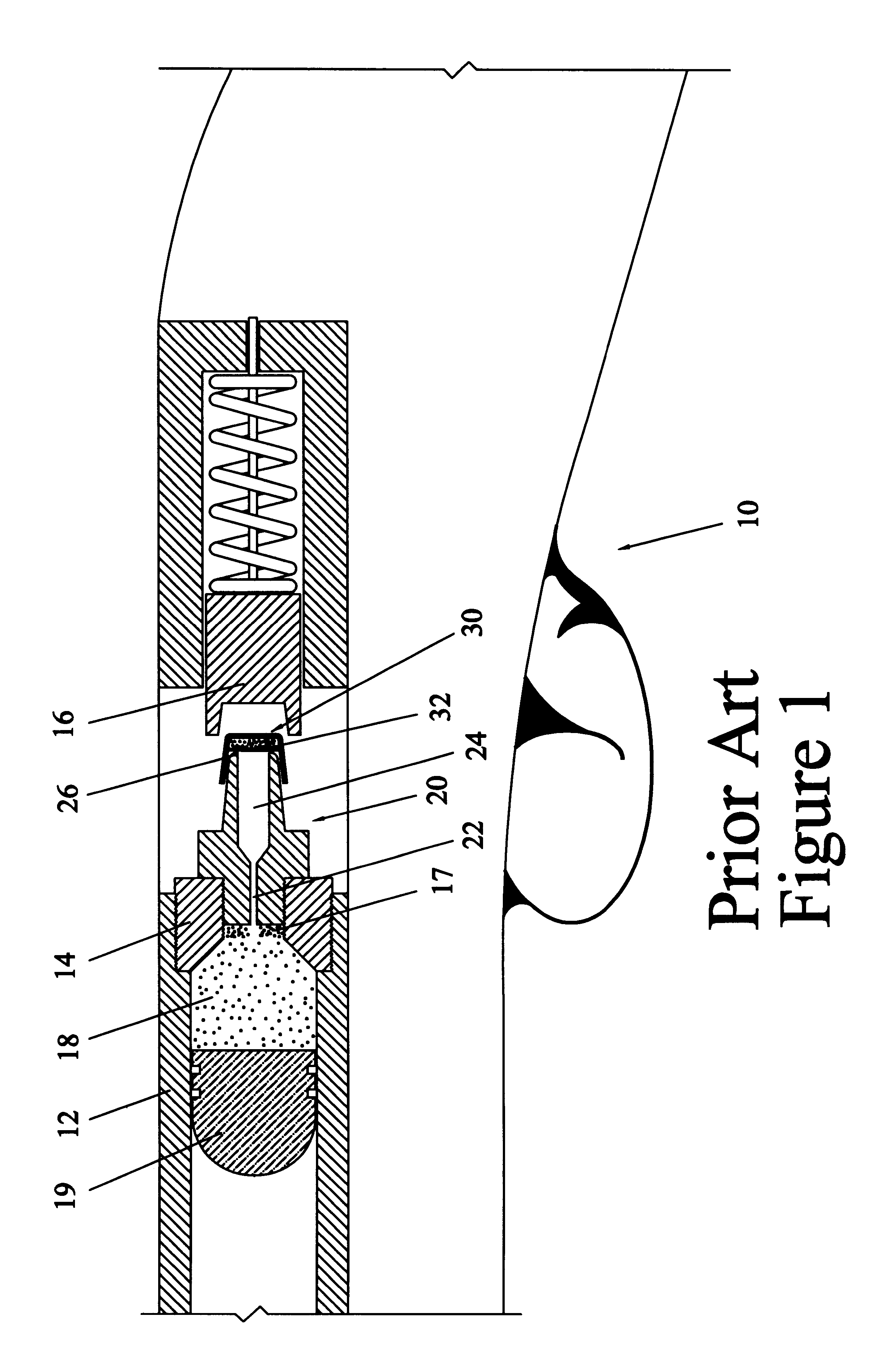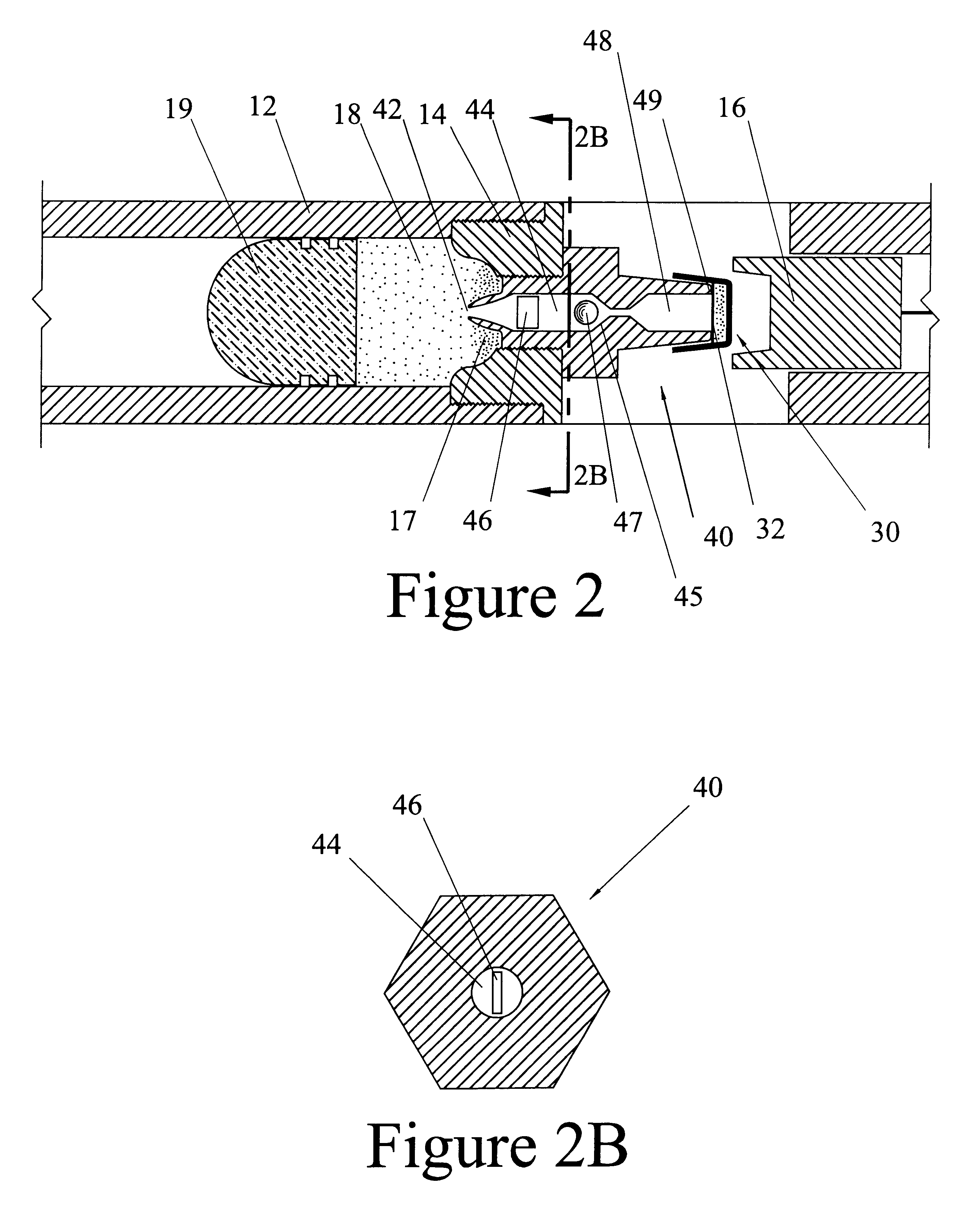Back-flash check for muzzleloaders
a backflash check and muzzleloader technology, applied in the field of backflash check for muzzleloaders, can solve the problems of less availability of rifle primers, less intensity and velocity of primary flashes, and increased cost of rifle primers
- Summary
- Abstract
- Description
- Claims
- Application Information
AI Technical Summary
Benefits of technology
Problems solved by technology
Method used
Image
Examples
Embodiment Construction
FIG. 3 shows a variation wherein nipple 40 is constructed in two parts. The first part includes anvil 49, flash chamber 48, valve seat 45, and at least part of valve chamber 44. The second part includes jet orifice 42 and the remainder of valve chamber 44. A spherical actuator 47 is placed farther from the barrel than retainer 46 and is prevented from leaving valve chamber 44 by retainer 46. FIG. 3 shows retainer 46 piercing the second part, but the proportions could be such that retainer 46 pierces the first part. The division of the present invention into two parts can effect production savings. Retainer 46 may be a bar or a pin. During ignition, actuator 47 will deflect to one side of retainer 46 and touch the wall of valve chamber 44 thus making optimum the ignition path.
FIG. 4 shows a variation wherein nipple 40 is constructed without a flash jet. Side hammer muzzleloaders tend to have too little room or space at the end of a nipple to accommodate a flash jet. Thus this variati...
PUM
 Login to View More
Login to View More Abstract
Description
Claims
Application Information
 Login to View More
Login to View More - R&D
- Intellectual Property
- Life Sciences
- Materials
- Tech Scout
- Unparalleled Data Quality
- Higher Quality Content
- 60% Fewer Hallucinations
Browse by: Latest US Patents, China's latest patents, Technical Efficacy Thesaurus, Application Domain, Technology Topic, Popular Technical Reports.
© 2025 PatSnap. All rights reserved.Legal|Privacy policy|Modern Slavery Act Transparency Statement|Sitemap|About US| Contact US: help@patsnap.com



